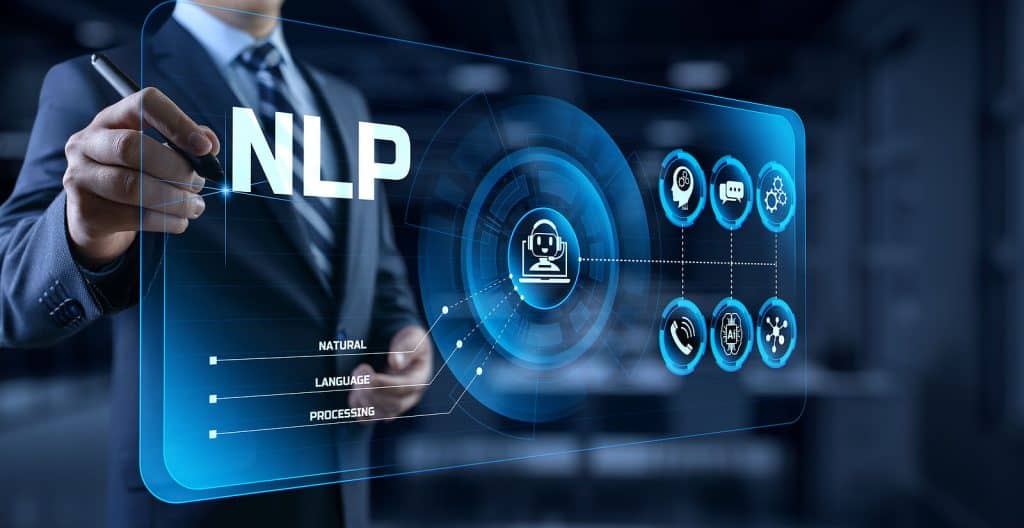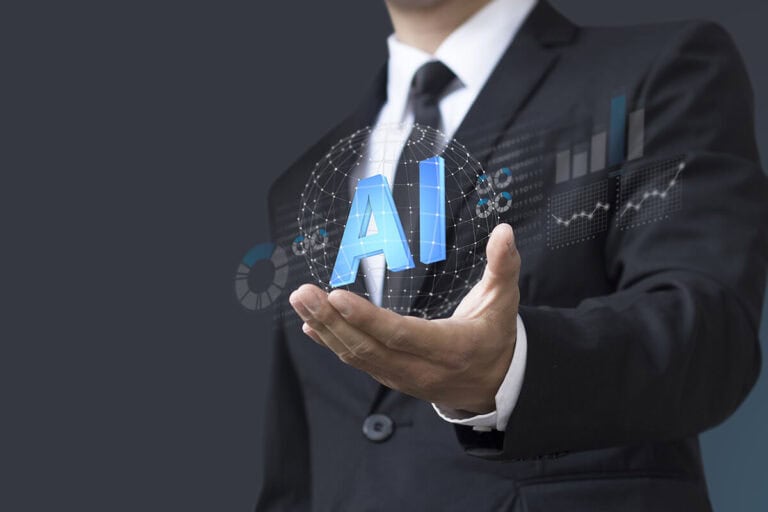What are types of Natural Language Processing uses in industry? This article examines particularly examines NLP in health care.
Table of Contents
Toggle“Customer experience” is the mantra now driving organizations in virtually all industries as they look for ways to improve how they interact with their clients, consumers, or users. Communicating with words is a natural tendency for consumers. They seek out information and help from the brands they deal with — and digital technologies using conversational interfaces are core to facilitating this. Making sense of what the customer has to say (whether vocally or in the form of written text) is the function of Natural Language Processing or NLP.
Natural Language Processing is a branch of Artificial Intelligence (AI) that employs analytics and sophisticated algorithms to enable systems to understand and work with the unstructured data typically associated with written and spoken language.
In essence, Natural Language Processing transforms human language into a form that machines can readily interpret and act upon. Intelligent systems running on NLP algorithms and machine learning can analyze, understand, and extract meaning from text and speech. This makes them ideal for deployment in applications like email filtering, language translation, grammar correction software, social media monitoring, and voice assistants.
Natural Language Processing Uses in Industry – Applications of NLP in Industry
These NLP applications find uses in wide-ranging areas across a multitude of industries. On the Internet — the medium binding organizations in all sectors of the economy — NLP techniques and technologies power search and recommendation engines, process automation, on-the-fly translation, and sentiment analysis of social media content and customer feedback.
Organizations in areas as diverse as retail and utilities use these tools to assess customer opinion and improve their delivery of products and services. Chatbots powered by machine learning and NLP enable businesses and institutions to give real-time responses to customer queries and intelligently route and automate requests for technical support and assistance.
Behind the scenes, NLP is playing a significant role in assisting brands in their customer support and general service delivery and the way they design, develop, and promote their products and services. For example, sentiment analysis of natural language data can help sales and marketing professionals craft personalized and targeted advertising strategies and assist in creating the content and offerings they use to implement these campaigns.
Natural Language Processing uses in industry include analysis of internal and incoming communications can help HR and management gauge and respond to employee sentiment and assess new hires within an organization.
At the consumer level, natural language tools like autocorrect and spell-checking help improve the quality and nature of written and spoken text output through their deployment in word processing applications and other productivity software. And Natural Language Processing capabilities are a central part of the workings of the digital and voice assistants in phones, smart homes, and vehicles that affect so many aspects of our daily lives.
Natural Language Processing in the Health Sector
For a long time, healthcare providers have complained about a lack of access to the kinds of behavioral, environmental, and socioeconomic information that can help to unearth truly actionable insights at the point of care. In the fields of healthcare delivery and the life sciences, great hopes have been placed in recent years on the potential of digital technologies and the vast volumes of structured, semi-structured, and unstructured “big data” available within the health care and medical ecosystem.
Consumer medical gadgets of the Internet of Things (IoT) and information generated by patients within the healthcare system are one source of possible insight. Electronic Health Records (EHR) are another major contributor to the trove of health care data. EHR typically consists of notes and on-the-spot observations from health professionals — much of which is recorded in a non-formalized manner in both text and audio files. Natural Language Processing has the potential to cut through much of this noise to get to the deeper meanings and insights. However, the use of natural language processing in healthcare comes with complications and challenges.
Obstacles to NLP Implementation in Healthcare
For today’s NLP systems, usable information can only be extracted if that data is easy to identify. Electronic Health Records information is typed by medical practitioners who use shortcuts, abbreviations, acronyms, and a diverse range of custom templates. Natural Language Processing systems often encounter problems when dealing with templates, as the NLP tools are designed to look for sentences and keywords or phrases. In addition, cut-and-paste text shortcuts tend to generate a lot of superfluous content that adds process-intensive bloat to the system. And notes made by clinicians may contain inaccurate or out-of-date information to confuse matters further.
Medical language also consists of several different sub-languages, each often having a different set of vocabulary rules from the primary language. For instance, you’ll often find a wide variance in syntax between clinician notes and a medical blog. To extract meaning from each sub-language, an NLP system for healthcare must first clearly understand its rules. Because of this, an off-the-shelf NLP solution designed for one sub-language can’t be used on another. NLP developers and analysts must custom-tailor systems for each specific sub-language.
NLP developers must also model healthcare systems to successfully extract meaning from text and infer context from its usage of words from the outset, to enable the NLP platform to scale well as it’s used over time. There are also challenges in designing for linguistic variation, such as using different forms of words with a similar meaning or using different words for a single concept.
When it comes to NLP uses in industry, health professionals in organizations that rely on Natural Language Processing for EHR data handling must therefore be encouraged to shy away from using non-standard language to create and manage notes at the user level. Although most NLP processing engines for healthcare are built to handle a wide variety of medical notation terminology, the use of uncommon acronyms can confuse NLP coding algorithms and other medical note readers.
This said, the accuracy of natural language processing in a health care context increases along with the volume of data that’s available for learning. So the more you use a healthcare NLP platform, the more accurate its implementation of machine learning and artificial intelligence becomes.
Advantages of using NLP in Health Care
Using Natural Language Processing on health records, computer-assisted coding can synthesize the content of long chart notes into the most important points. Typically, an Electronic Health Record organizes information based on each patient encounter, which over the course of many patients may lead to vital information being buried in the mass. Using NLP, it’s possible to create a customized and simplified EHR interface with pointers that make patient encounter information easier for clinicians to find.
NLP features like sentiment analysis of social media content can be pivotal in enabling predictive analytics. For example, a study of Twitter feeds in 2018 found a direct correlation between the frequency of posting sad or angry tweets and use of emoticons, and a tendency to commit suicide. In addition, the system recorded a successful prediction rate of 70%, with only 10% of false positives.
A phenotype is an observable biochemical or physical expression of a particular trait in an organism, related to behavior, appearance, and other factors. The study of phenotypes enables clinicians to group or categorize patients who share certain traits. With its ability to analyze and extract unstructured data in text form, NLP gives analysts access to what’s reckoned to be around 80% of all the patient data available, giving greater scope to create phenotypes for patient groups.
When it comes to NLP in health care, Natural Language Processing has been playing a key role in decision support, enhancing the accuracy and completeness of EHR by translating the free text into standardized data. NLP systems with free-text query interfaces are enabling healthcare professionals to extract meaningful information from semantic data lakes and data warehouses. By using NLP to flag patient data with certain characteristics, natural language processing is also used in clinical decision support. For example, in 2014, IBM Watson was employed to identify patients with heart disease at the Carillion Clinic in Virginia.






